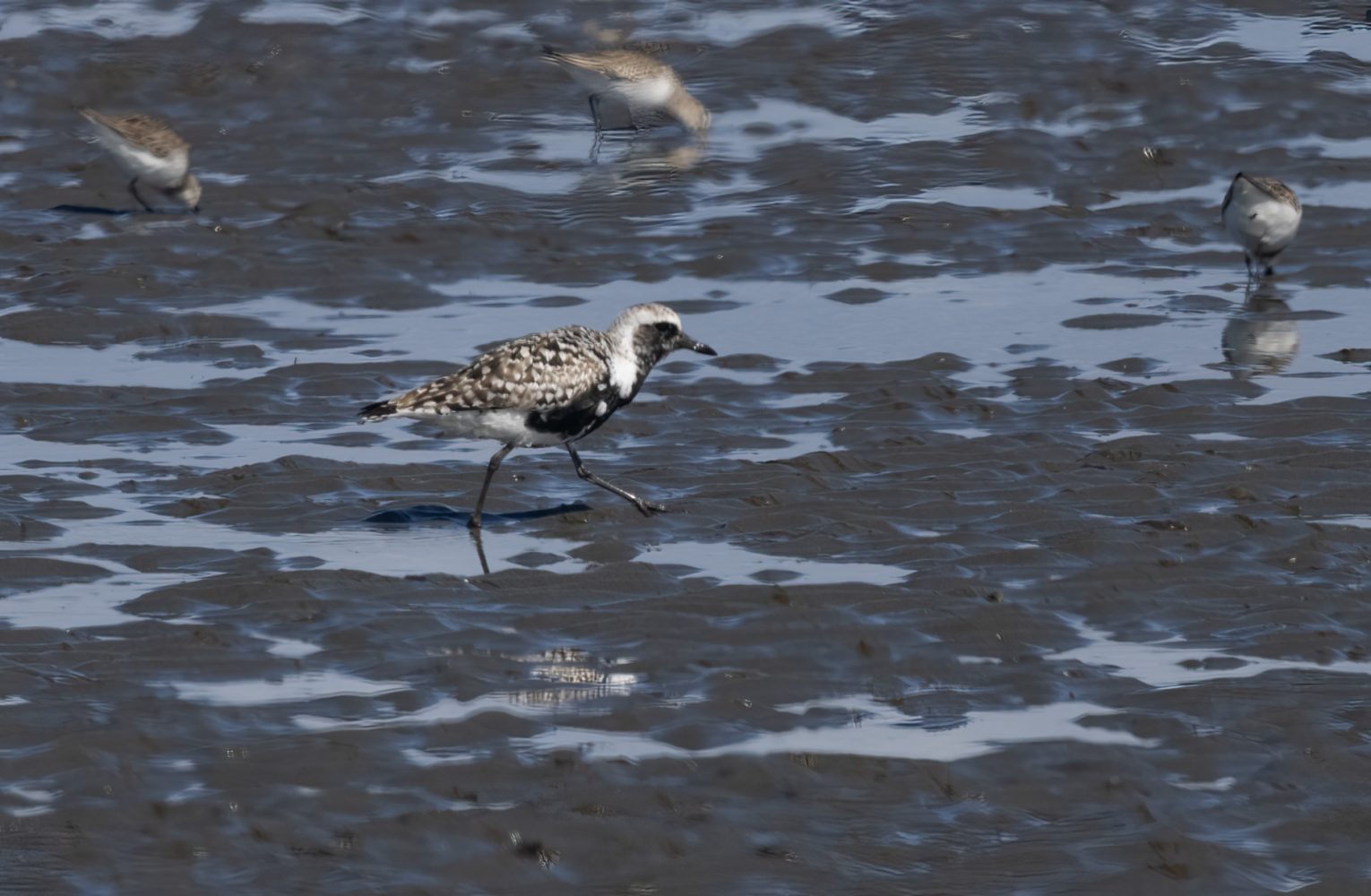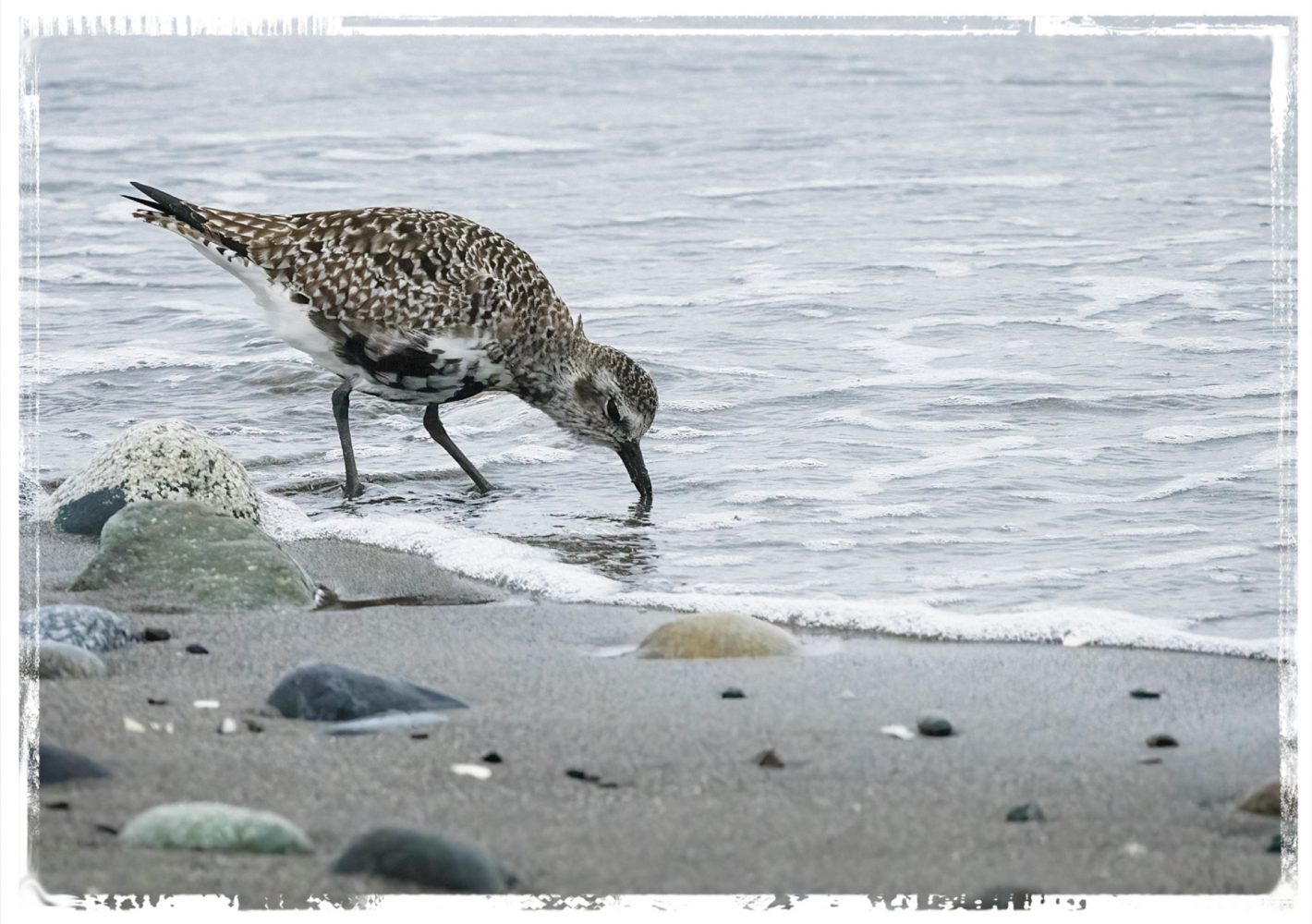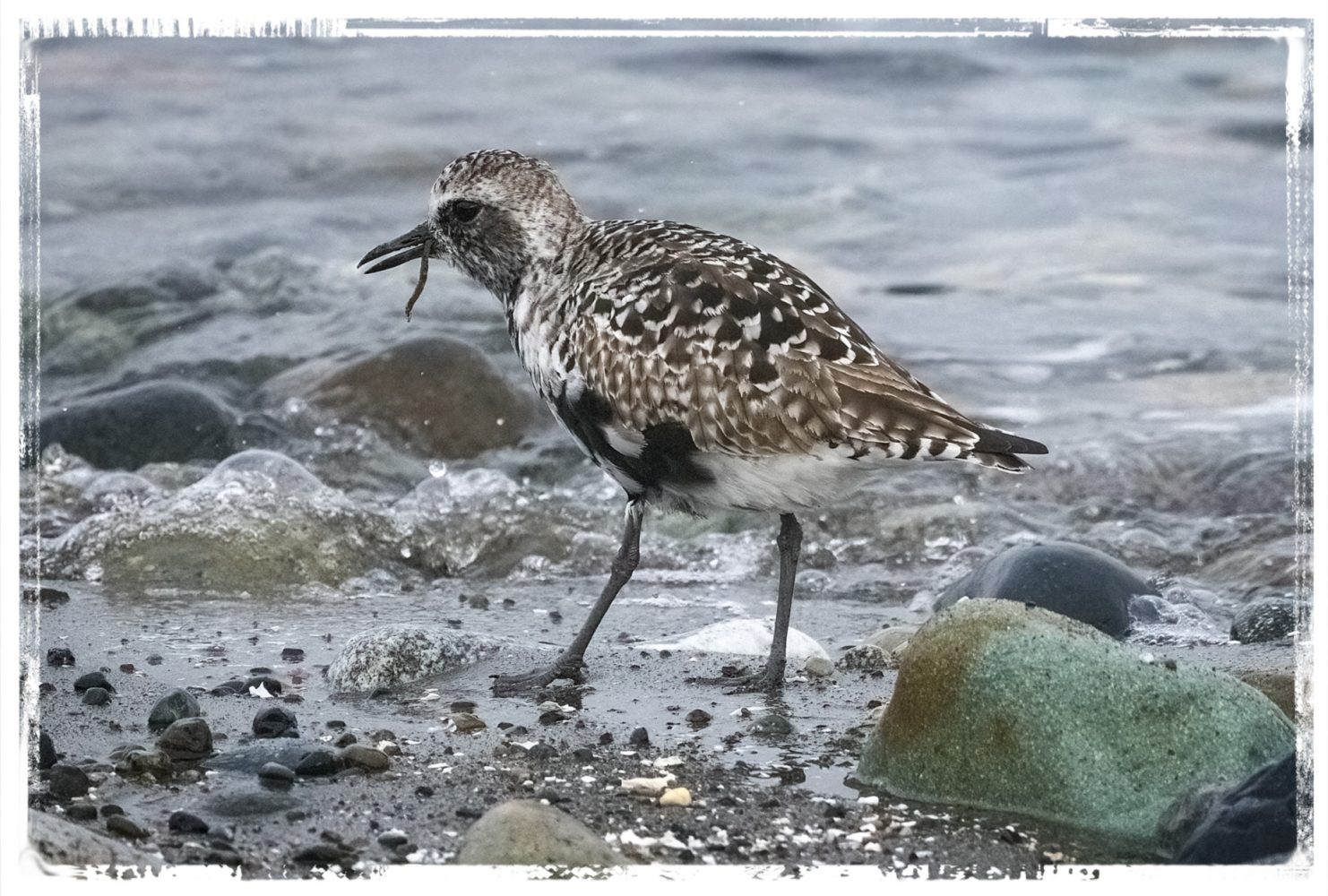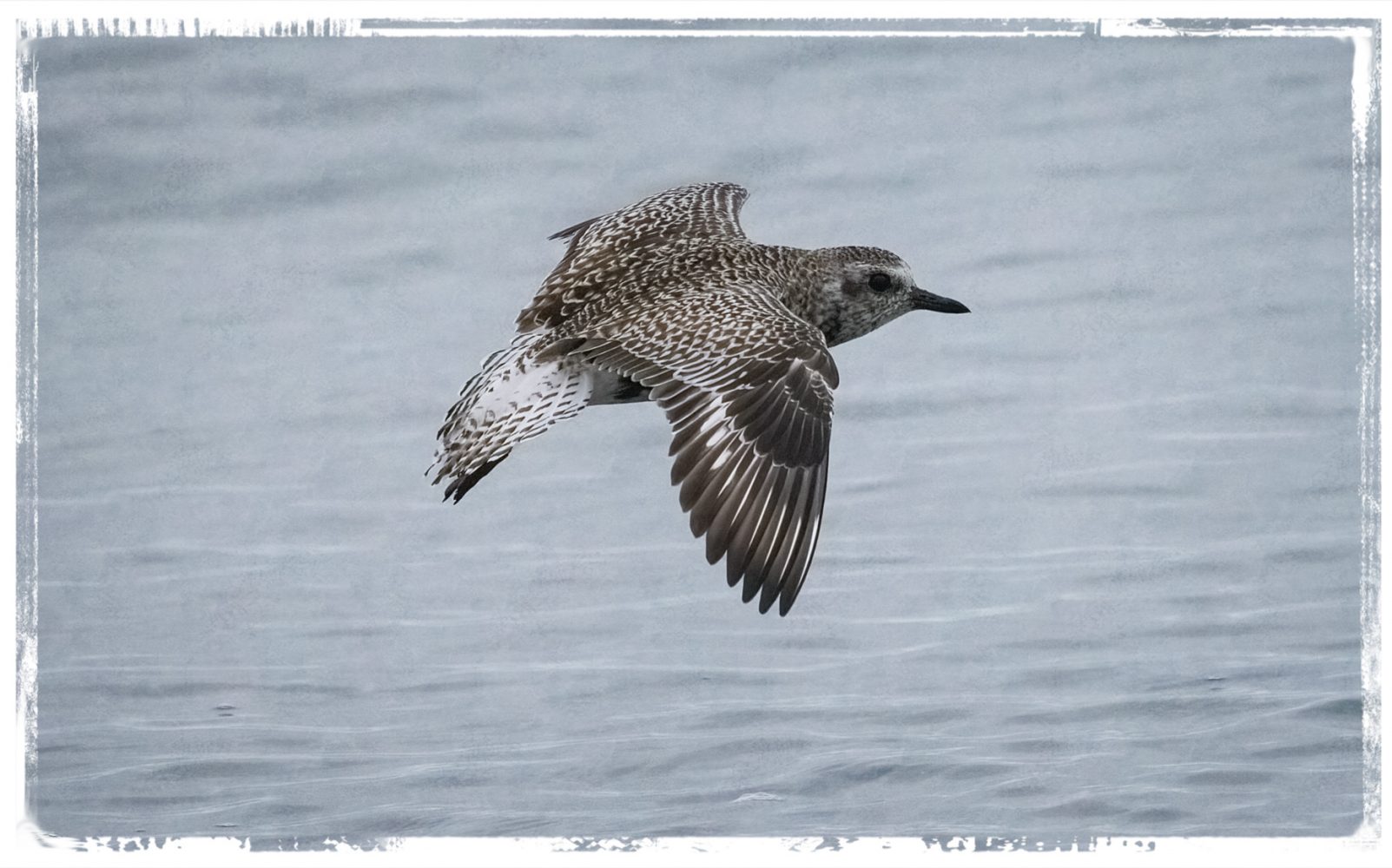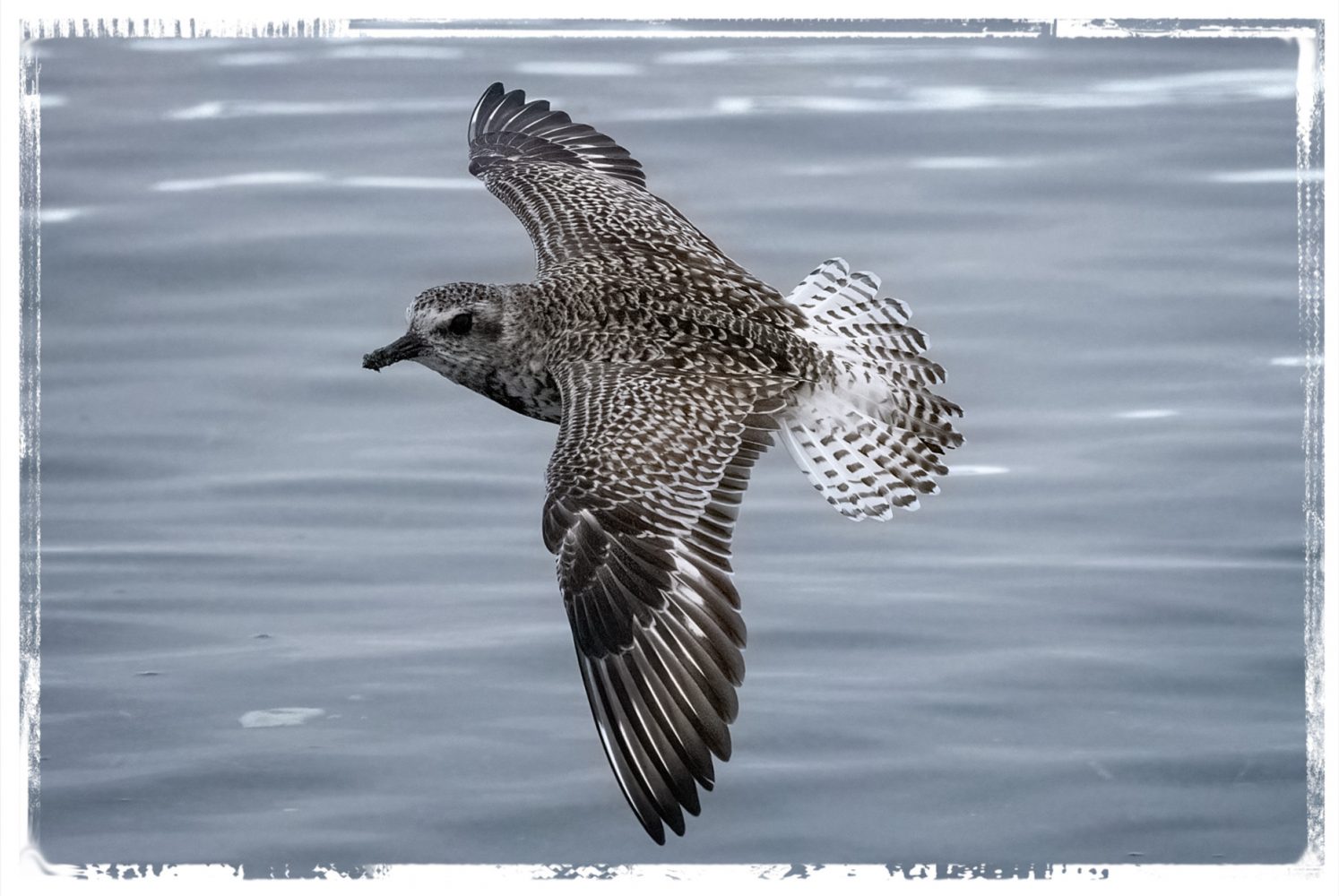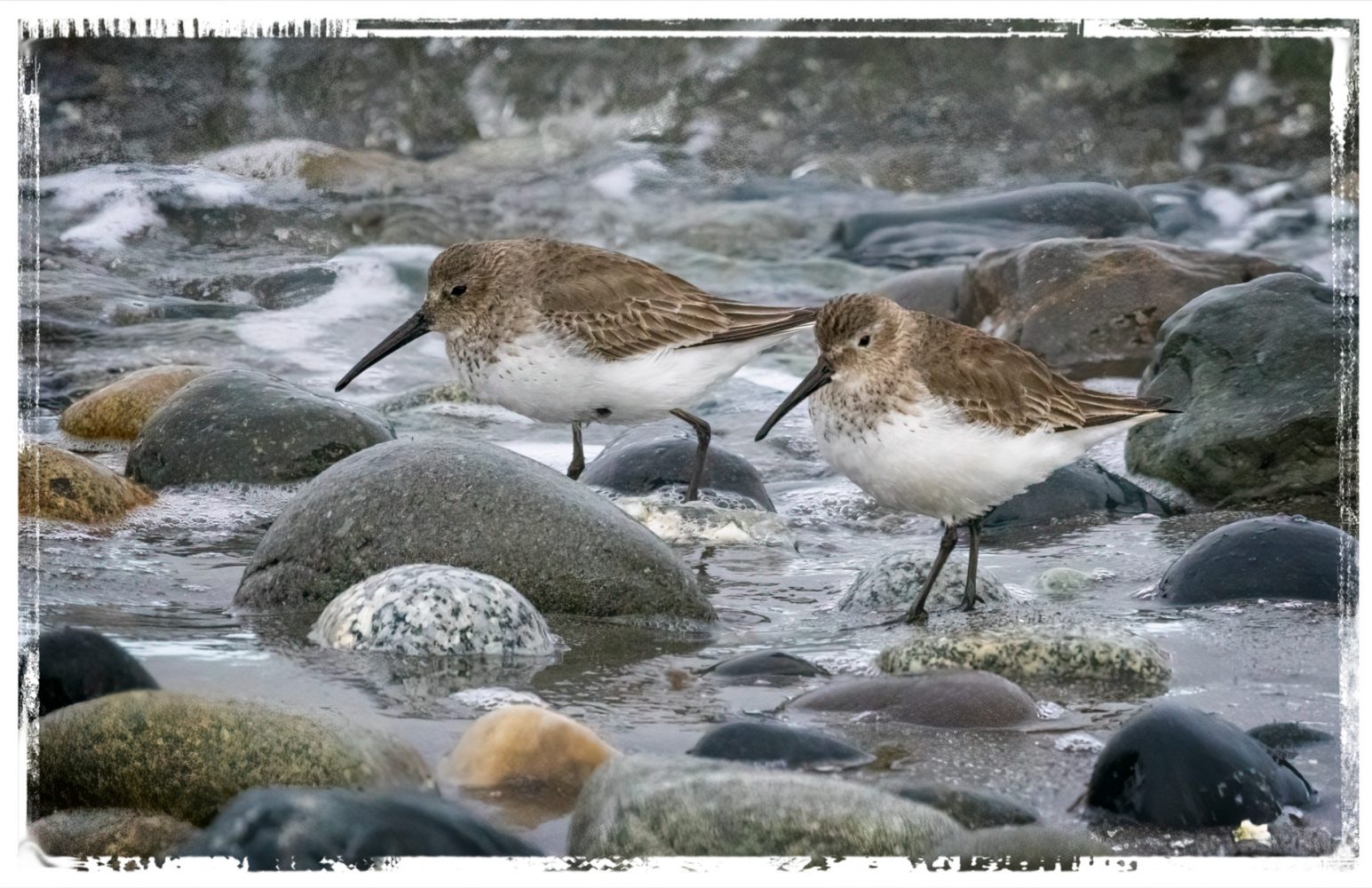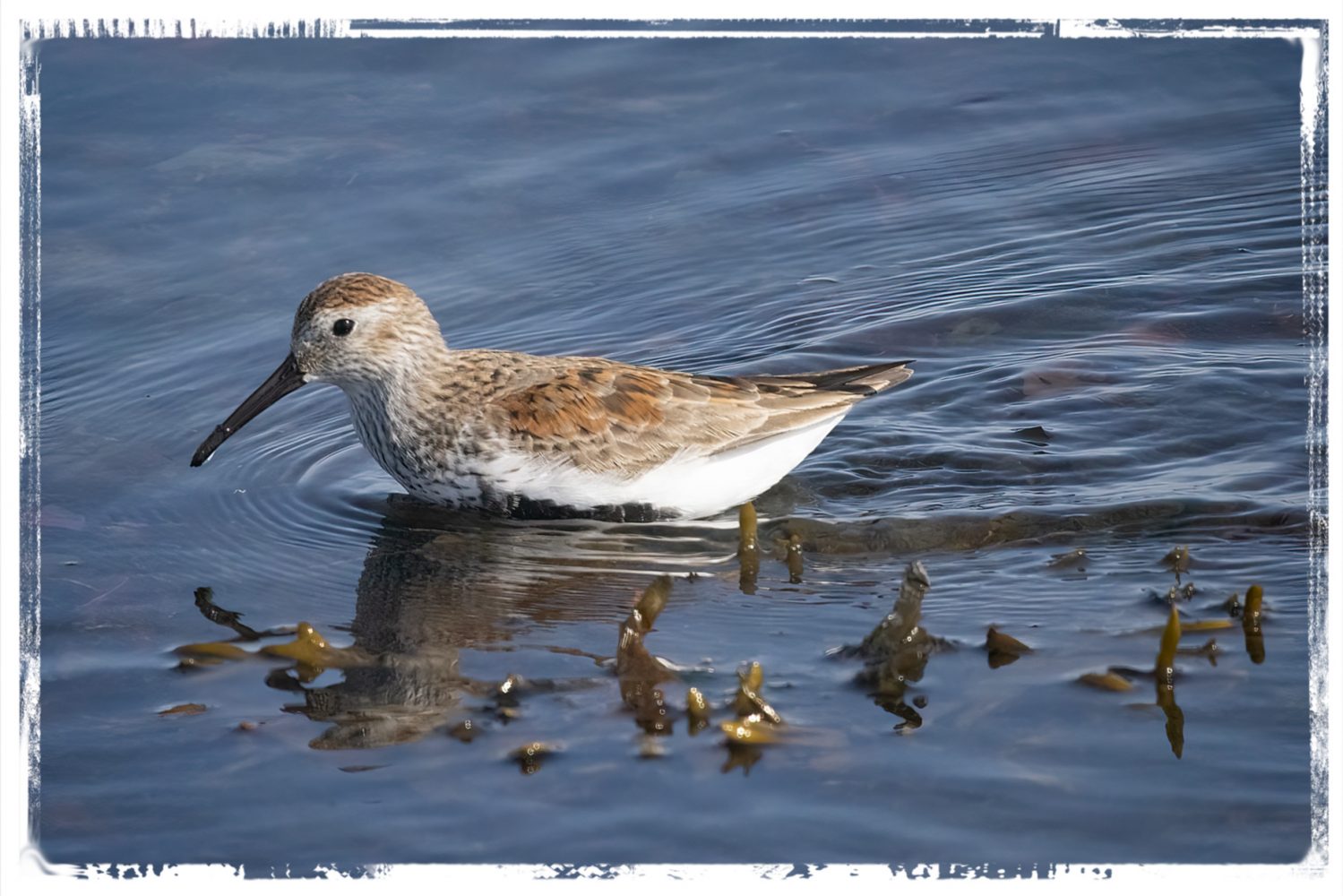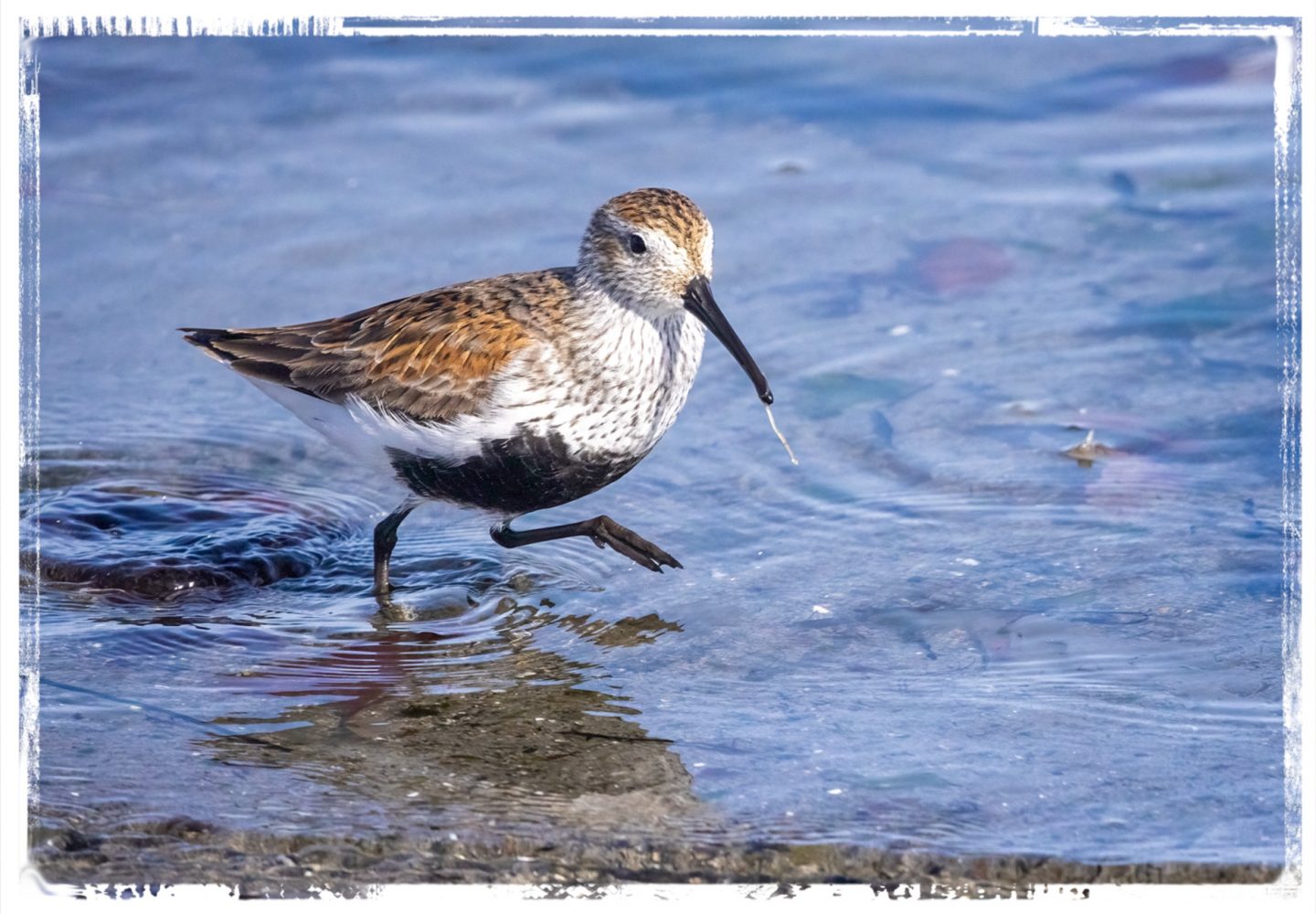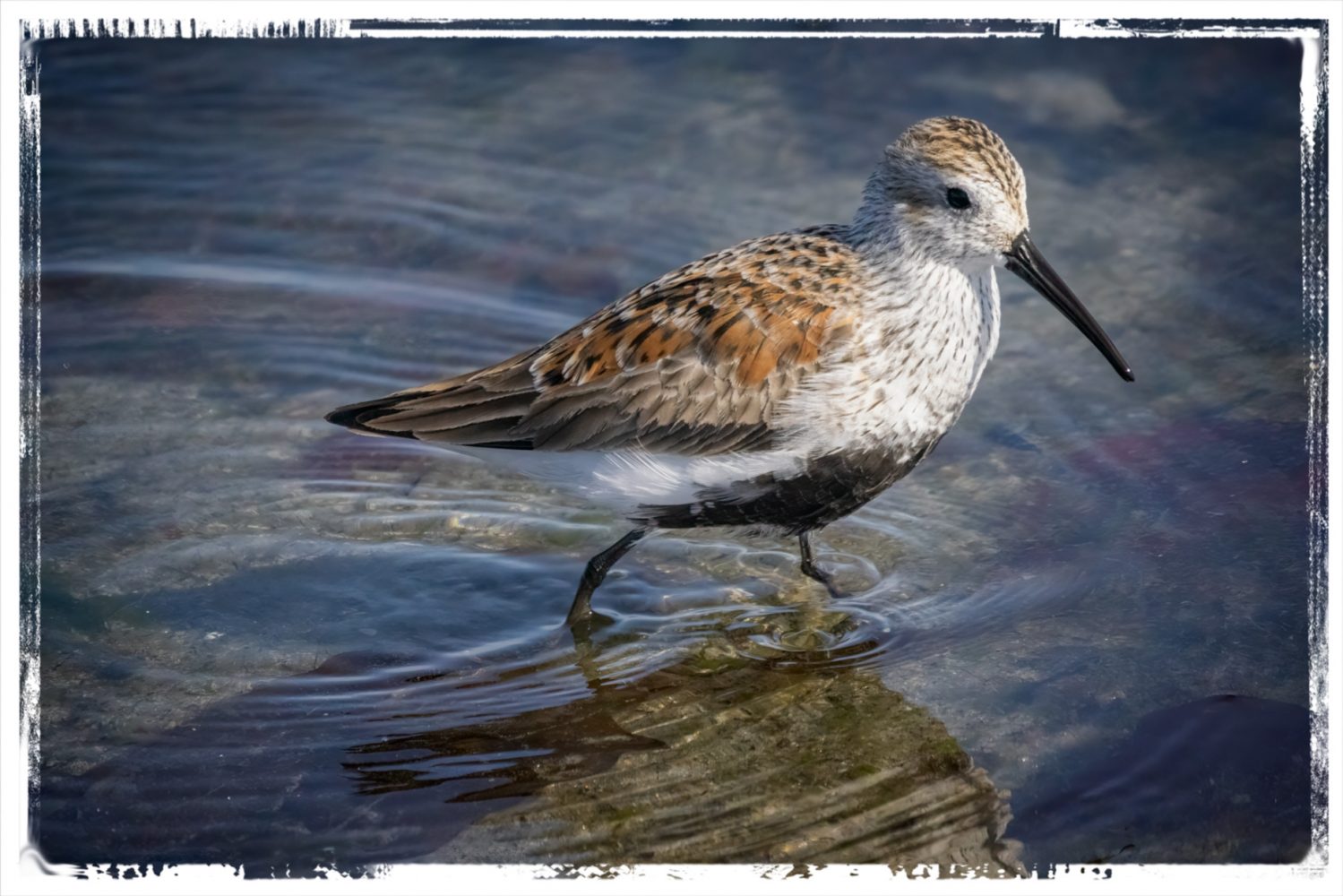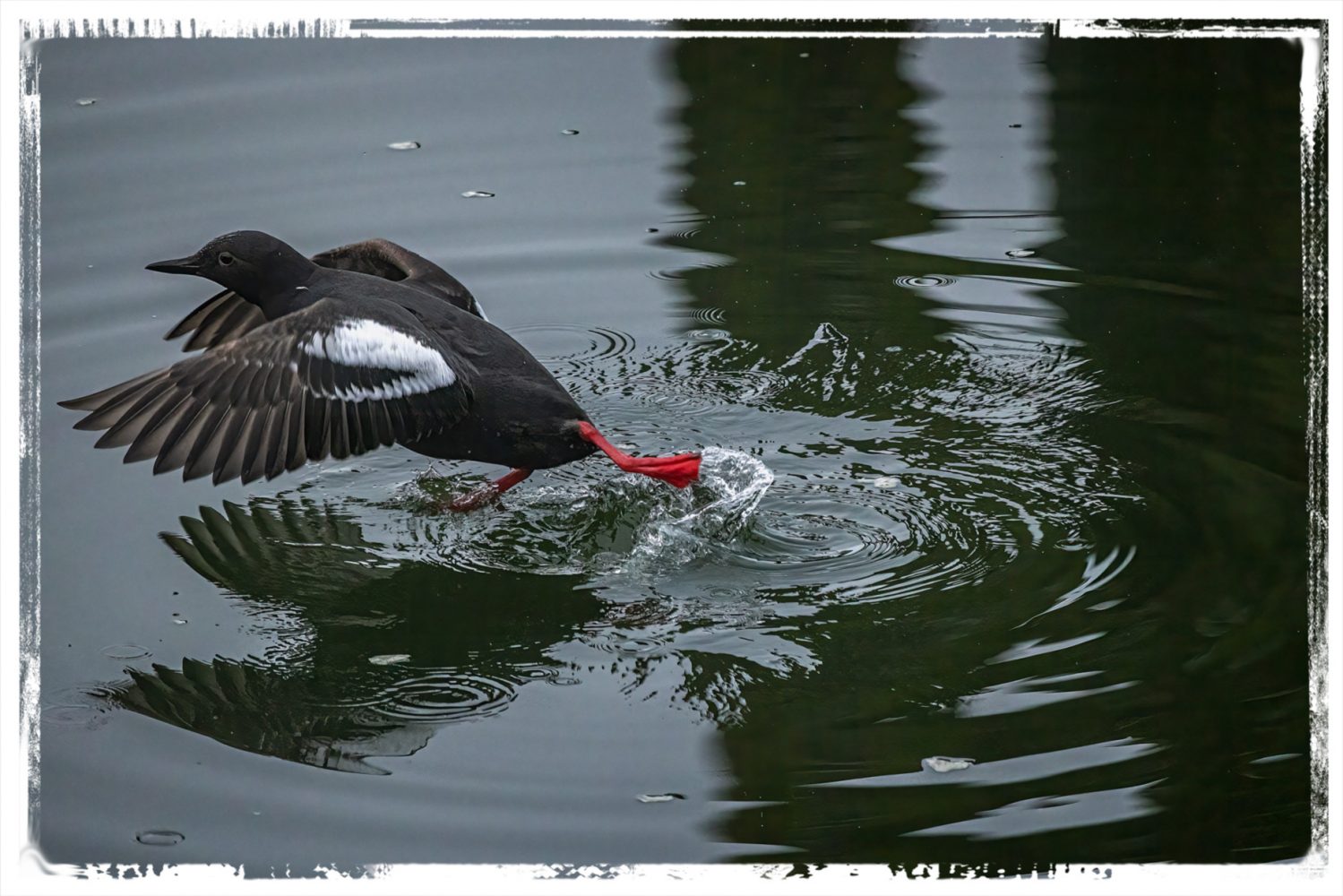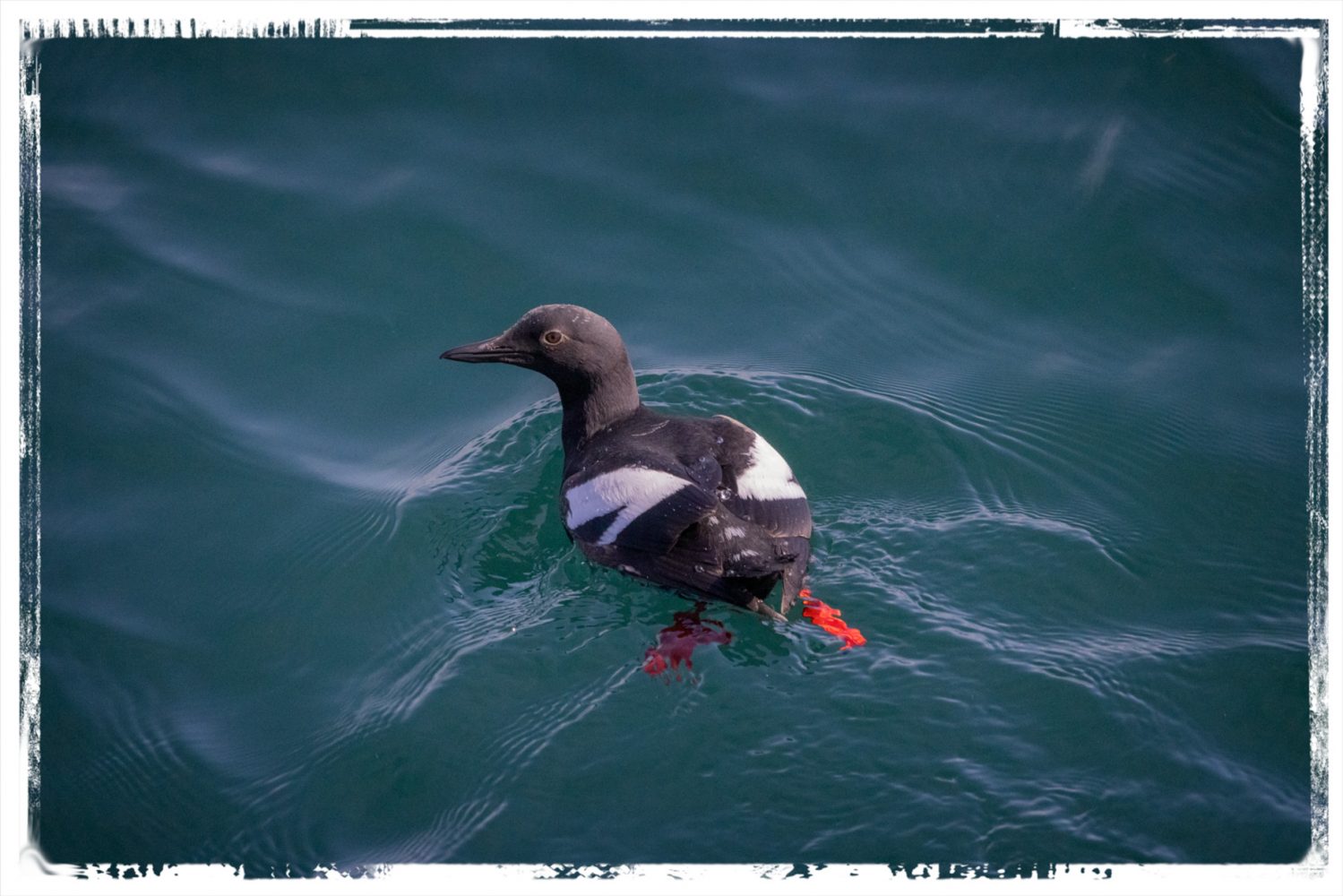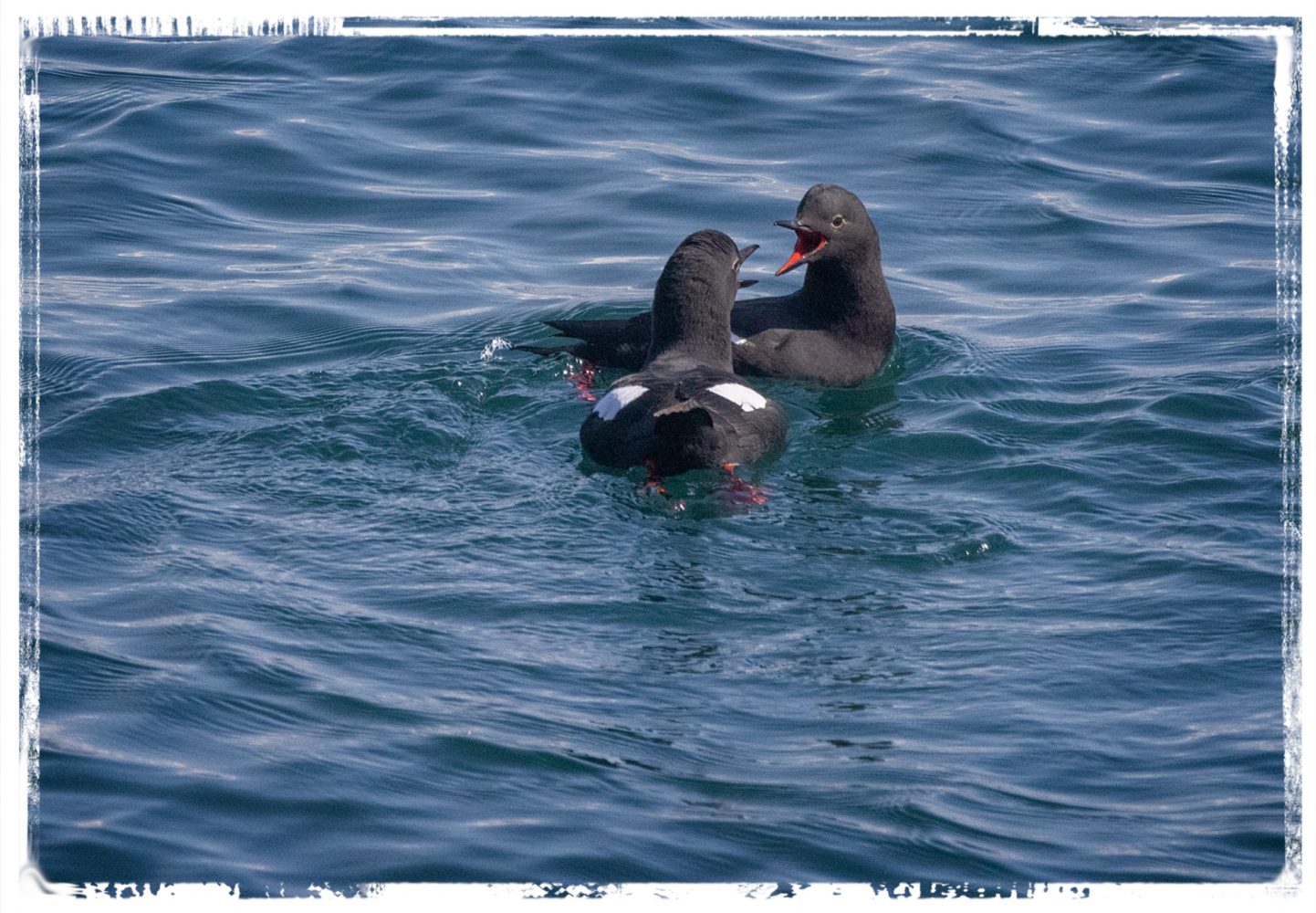With sunshine predicted, we spread our wings and headed to Ft. Flagler and Port Townsend last Sunday. Unfortunately, as is often the case here, the predicted sunshine was heavily filtered by dense, low-level clouds. In fact, even though we had gotten up for an early start, I almost decided to return home when greeted by eye-level clouds and raindrops as we crossed the Narrows Bridge.
Sunrise highlighted the recent snow on Mt. Baker, but the mountain itself was hard to distinguish from the grey skies.

Still, I was grateful that we didn’t get rained on during the whole day, giving me a chance to photograph several birds I haven’t seen for quite a while, like this female Red-Breasted Merganser.
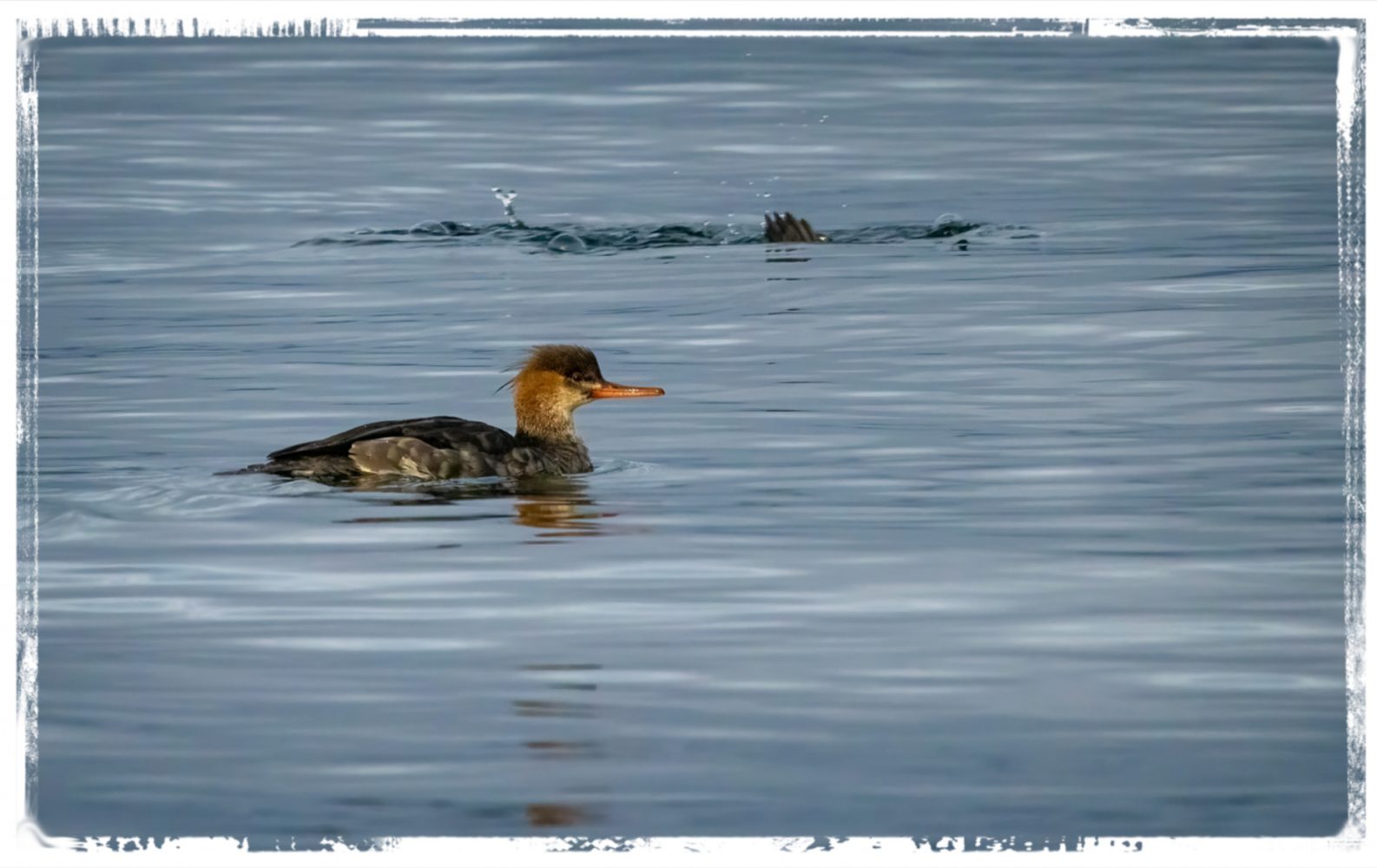
Thanks to the miracle of modern cameras, Photoshop, and Topaz DeNoise all these distant shots are much clearer —and brighter— than they were in real life, and the water is even blue instead of gray as it appeared that morning.
Being able to see birds like this Common Loon that I rarely see locally made the hour-long drive worthwhile.
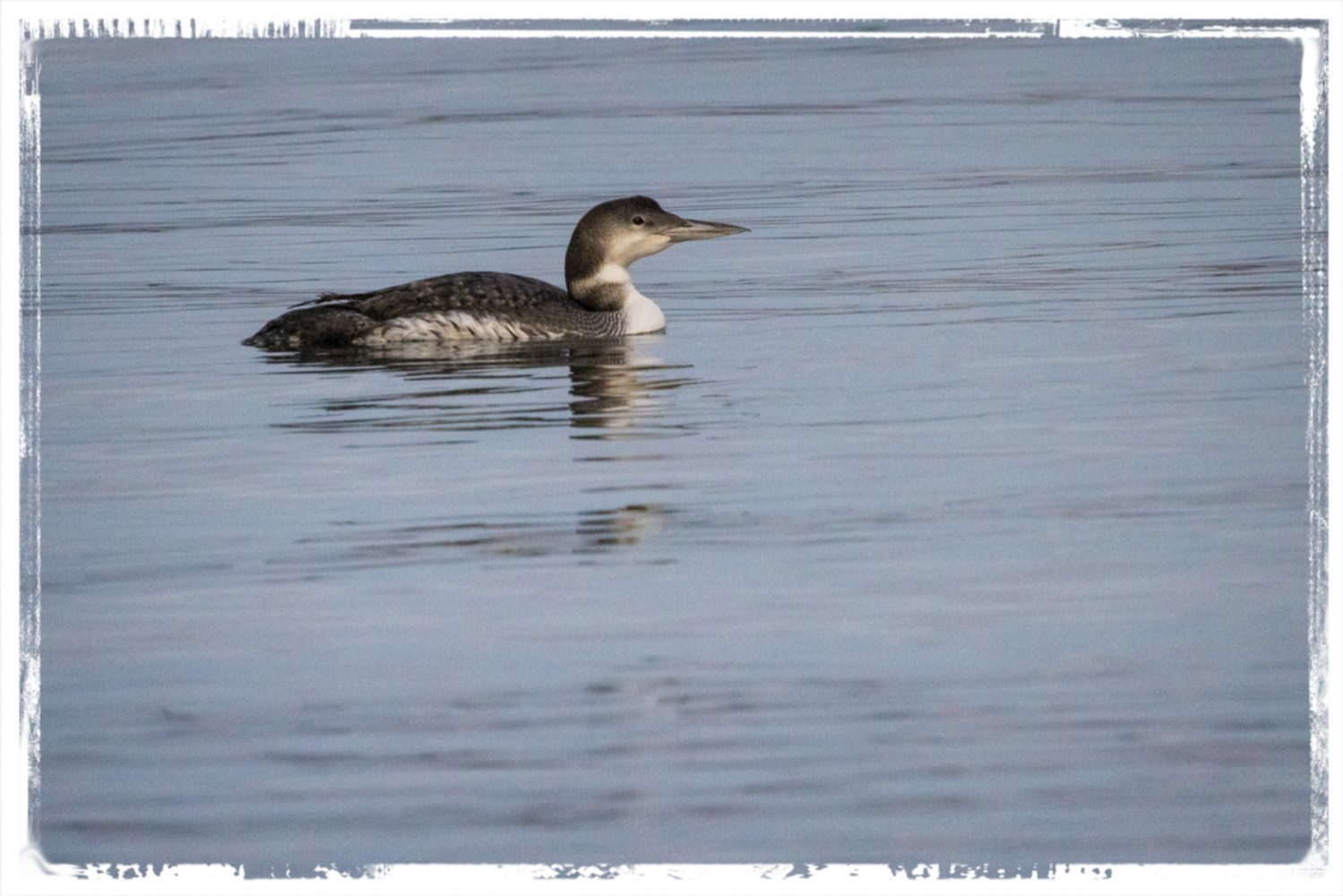
Heck, even seeing birds we commonly see locally in a different setting, like these Double-Crested Cormorants, reminded me why we return here so often in the winter and spring.
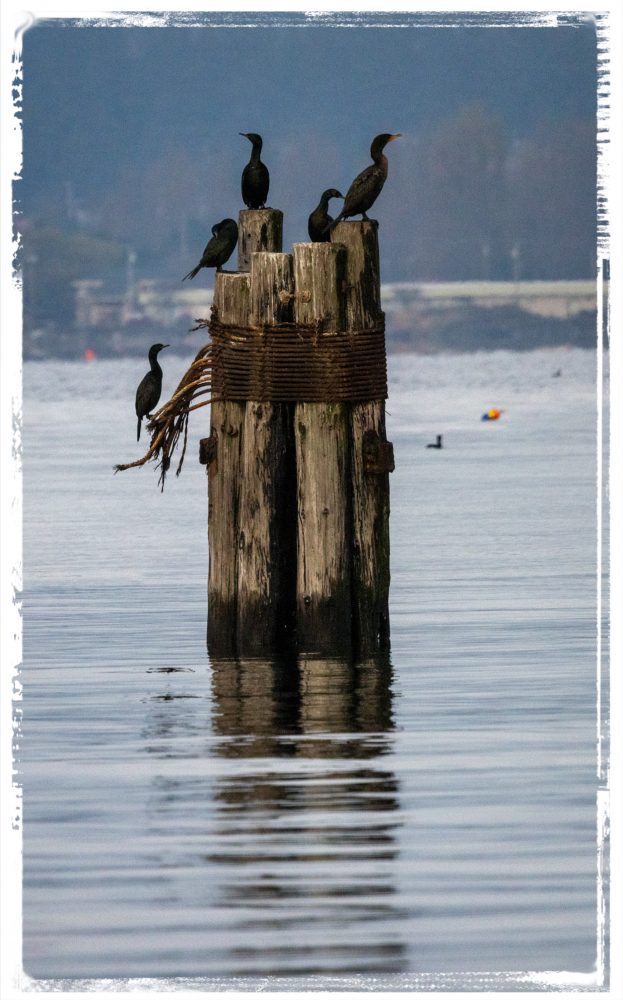
The early morning light and the surprise of seeing this heron at Ft. Flagler even inspired me to take yet another shot of a Great Blue Heron, sitting on the post that is usually reserved for cormorants.
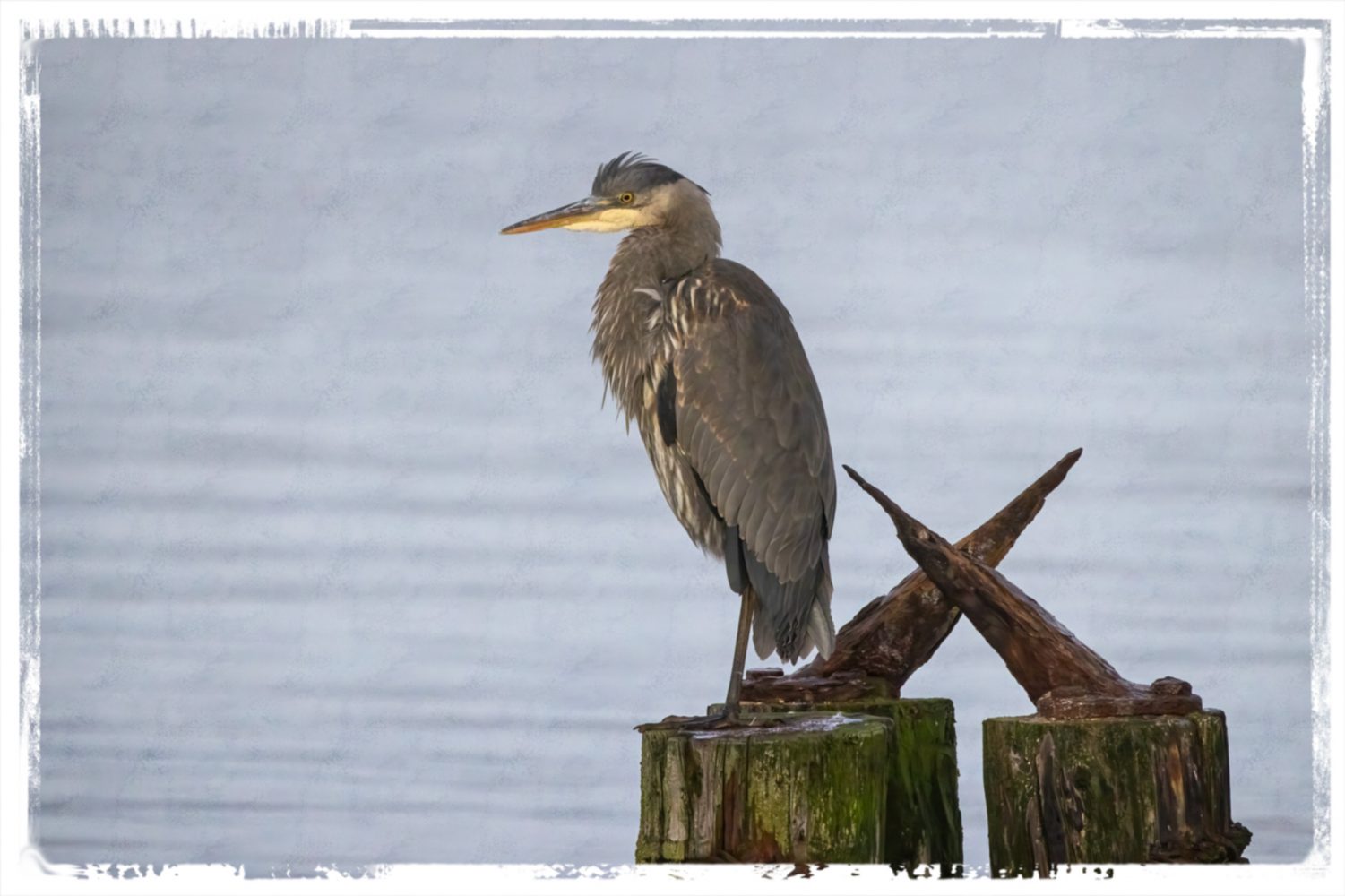
It didn’t take long before I was glad that we hadn’t been deterred by the cold and the overcast sky.

